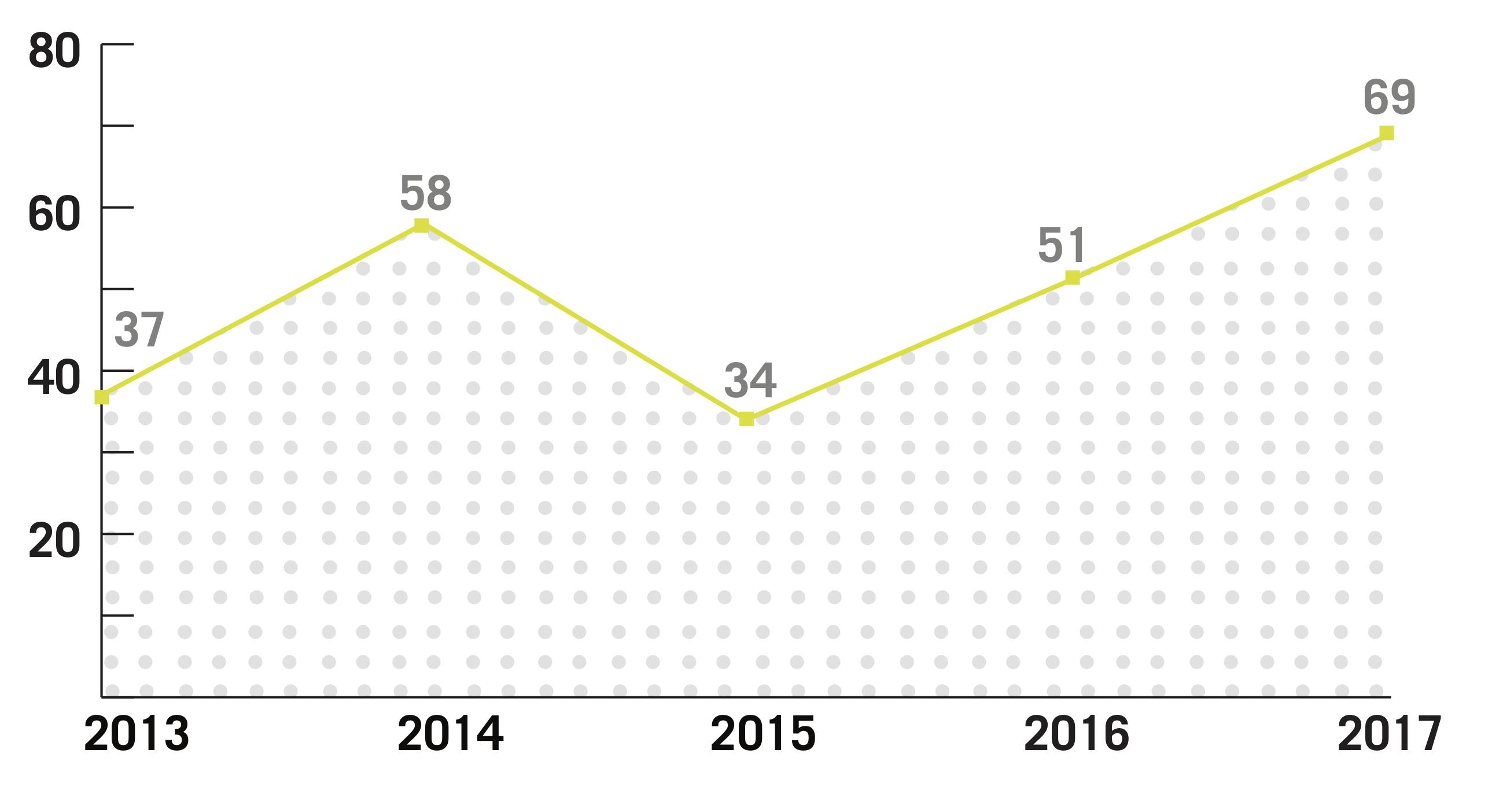Arrests on campus surged last year to the highest point in at least four years.
University Police Department officers made 69 arrests in 2017, jumping 35 percent from the 51 arrests in 2016, according to an analysis of the University’s crime log. Experts said the trend could indicate a larger police presence or a greater public trust in the police.

Emily Recko | Hatchet Designer
Source: University Crime Logs
Unlawful entries accounted for 45 percent of last year’s arrests, the same percentage as 2016, according to the crime log. Simple assault was the second-most common offense resulting in arrest at 18 percent – up from 10 percent the previous year.
Thefts and drug law violations were the next most common offenses resulting in arrest.
A person not affiliated with the University can be arrested for unlawful entry if they have previously been barred from campus property and return to GW-owned buildings or spaces, violating University policies and city trespassing laws.
Last year, GW issued more notices barring people unaffiliated with the University from campus than any other year since 2012.
Darrell Darnell, the senior associate vice president for safety and security, said GW has not changed its policy on barring notices or arrests.
“Most of the unlawful entries in the past year resulted in arrests of previously barred individuals, typically not affiliated with the university, who have entered GW property again,” he said in an email.
Darnell declined to say what factors could have contributed to an increase in arrests in 2017, but said officials review crime trends and staffing resources when determining security and patrols in buildings.
“We are committed to providing a safe and secure environment for our students, faculty, staff and the greater GW community and we will continue to enforce University, local and federal laws and take the appropriate action if either a member of the GW community or a non-affiliated individual is found violating any laws,” he said in an email.
Experts said an increase in police patrols could lead to more arrests because officers are monitoring areas more frequently.
Metropolitan Police Department spokeswoman Rachel Reid said MPD strategically increases its presence in the areas surrounding the University’s campus when classes are in session as more people are living and working on campus.
Michael Dorn, the executive director of Safe Havens International, a non-profit campus safety organization, said an increased police presence often leads to more arrests.
“One proven concept to try and reduce the risk of those crimes is to step up enforcement for a variety of types of violations,” he said. “You’re making criminal arrests, but you’re preventing crime. And there’s a very clear correlation.”
Dorn said arrests for unlawful entries may appear to be increasing, but it could be because police are paying more attention to that offense and not because instances of the offense itself are actually increasing.
“That’s a preventative activity,” he said. “On paper, it can look like more crime because you have more arrests.”
Dorn said the University’s crime rate could drop in the coming years, as the “habitually criminal” will inform others about the increased number of arrests on campus. GW’s crime rate decreased more than 35 percent between 2011 and 2016.
“Often if you see that type of increase, you may over the next few years see the arrest rate then drop because word spreads,” he said.
Frederick Shenkman, an emeritus professor of criminology at the University of Florida, said an increase in arrests could be due to the public’s increase in trust in law enforcement officials and procedures because they are more inclined to report violations or criminal offenses in their community if they have confidence in the police.
Arrest numbers could also be returning to normal levels after falling below average for a few years, he added.
“When people have faith in the police they are more likely to report the crime,” he said. “The irony with that is the more faith people have in the police, the higher the crime rate is going to be.”
Valerie Yurk contributed to reporting.




